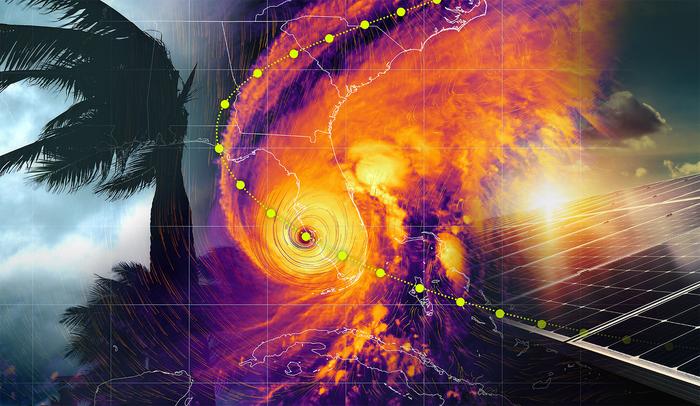Can Solar Super Grids Provide Power During Hurricane Season?
Caribbean islands are moving away from importing fossil fuels in favor of using their abundant sun and wind power for electricity. Frequent hurricanes, however, are problematic for solar energy generation. Researchers at the Department of Energy’s Oak Ridge National Laboratory developed a model to predict the drop in electricity generation better when storm clouds overshadow solar panels. Using super grids (a collection of grids) enables electricity to flow across island chains or between continents.
The underserved island residents can’t easily evacuate from the path of the many hurricanes in the Caribbean each year. The model can be used to understand the impact of hurricane clouds on any electric system. Experts in grid integration, renewables, and advanced computing methods used the algorithm to explore different grid connection approaches, modeling how each would affect the availability of electricity. They analyzed how a large hurricane would reduce power from known solar installations while traveling 10 possible paths over 10 to 14 days.
They used simulations to understand power availability during hurricanes if electric grids were connected via high-voltage cables on the ocean floor. The team modeled four different combinations: a standalone U.S. grid, a standalone Caribbean super grid tying all the islands together, a U.S.-Caribbean super grid, and a super grid connecting the U.S., Caribbean islands, and South America.
The largest super grid configuration included 90 photovoltaic plants within the hurricane corridor, plus solar farms in places such as California and Brazil that are unaffected by these hurricanes. The model showed some solar plants losing as much as 88% of their generating capacity for two days while shaded by hurricane clouds.

CREDIT: Andy Sproles/ ORNL,U.S. Dept. of Energy
Researchers found the U.S.-Caribbean super grid increases power reliability the most. The standalone Caribbean super grid proved least helpful, partly because hurricane trajectories typically align with the chain of islands. The South American addition did not significantly reduce power variations because the continent has few solar installations. However, it could provide energy security as an alternate power supply if islands became disconnected from each other or the U.S. system.
The first focus was wind energy during hurricanes, exploring how a U.S.-Caribbean super grid could reduce power slumps caused when hurricanes damage Puerto Rican wind turbines. After improvements to turbine technology made them stronger, they examined how a surge of hurricane wind energy could be shared among the Caribbean, the U.S., and South America.
Next, they will fuse solar and wind algorithms to determine how super grids could broadly enhance energy reliability in both the Caribbean and on the mainland. For example, during a major weather event in the U.S., could the Caribbean grid provide supplementary power to the U.S.?

